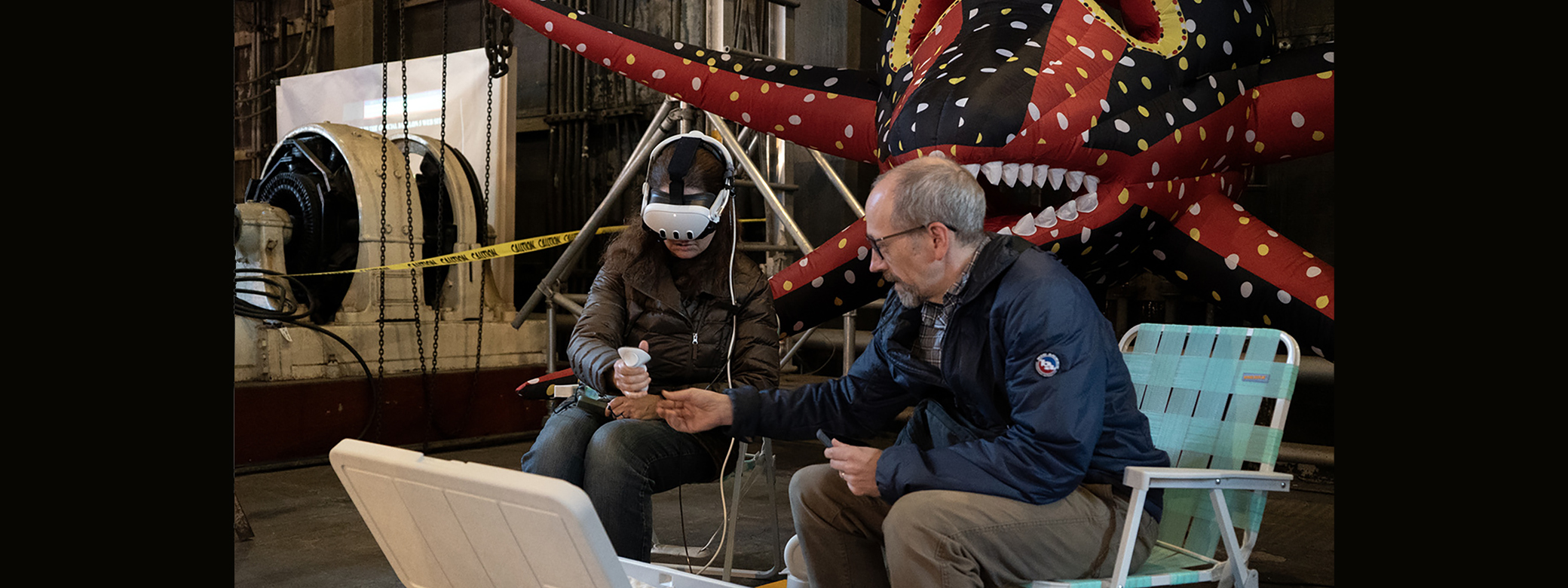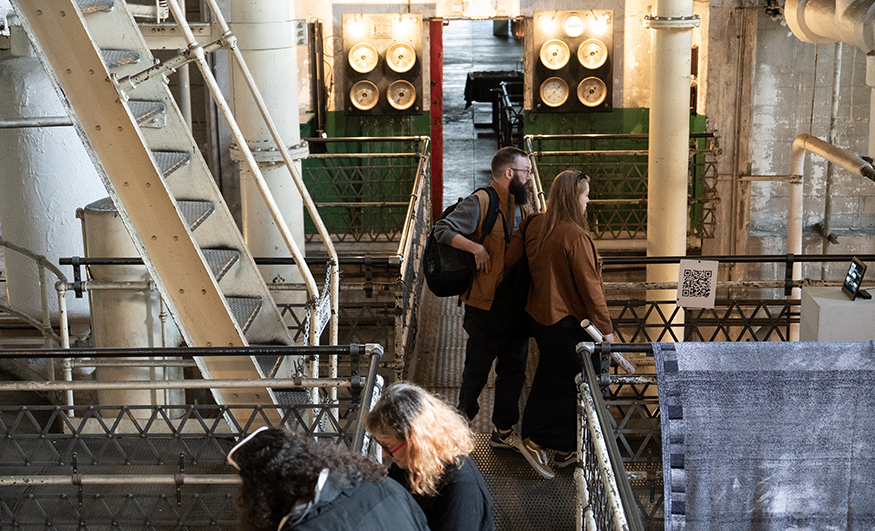
Prepare for the unexpected at the SPAM New Media Festival, a three-day event that showcases creative works in the field of digital arts and experimental media. The free event, presented by graduate students in the UW’s DXARTS department and their collaborators, will be held September 12-14 at Seattle’s Georgetown Steam Plant. Many of the works use technology — AI, robotics, sound, experimental video, virtual reality, wearable technology, and more — in new ways.
“A lot of the artists in the show speculate other ways of using technology beyond its mainstream use — other routes we can go that are less corporate and more community based,” says DXARTS doctoral student Sadaf Sadri, co-organizer of the festival. “People coming to the festival will encounter new ideas about the things that can be.”
DXARTS students came up with the idea of a new media festival as a way to connect with a broader audience, recognizing the Puget Sound region as the perfect place for such an event. Sadri volunteered to lead the effort.
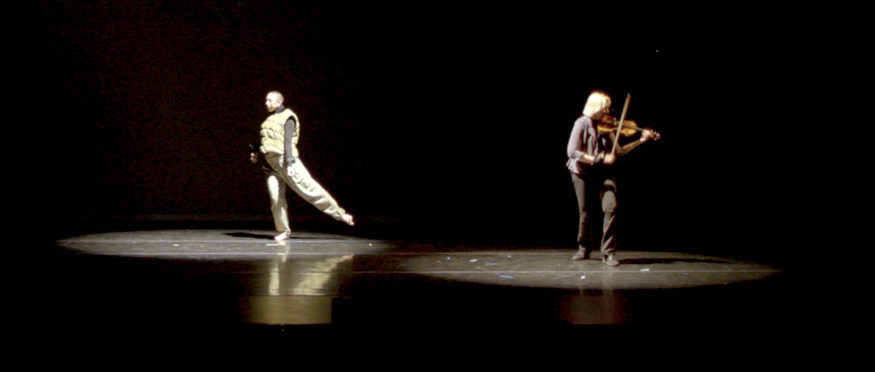
“Seattle is an interesting place because there's so much research and innovation around technology, and it is a tech hub,” Sadri says. “But making work at DXARTS that critically engages with or reimagines technology has often felt isolating. We wanted to build connections beyond the University and invite others into these conversations.”
Anna Skutley, a PhD student, new media curator, and close collaborator of DXARTS, serves as the festival’s co-organizer. Currently a doctoral student (remotely) at Britain’s University of Reading, Skutley has collaborated on curatorial projects involving experimental media.

The team launched the festival in 2023, with work by DXARTS students presented in a series of solo shows at Seattle galleries. Last year, the team switched to an open call for submissions and received about 50 submissions from artists across the US and abroad, including China, India, New Zealand, Scotland, and Canada. They secured the Georgetown Steam Plant as the venue for the three-day festival.
Festival visitors experienced virtual reality games, extended reality performance, handmade electronic instruments, and other boundary-pushing work. Though the event was free, tickets were required due to Georgetown Steam Plant’s occupancy capacity. The festival sold out, with about 1,000 artists, tech workers, youth, and other community members attending. “The festival is a practice of community building and connecting to other ways of looking and thinking with different perspectives,” says Skutley.
After the success of the 2024 event, 200 artists submitted for the upcoming 2025 festival — a huge increase in submissions. That’s been exciting but also challenging for the eight-person jury tasked with selecting a maximum of 30 works. “We get so many great submissions, it’s heartbreaking to say ‘no’ to so many of them,” says Sadri, who notes that logistics and a tight budget limit the number of works that can be included.
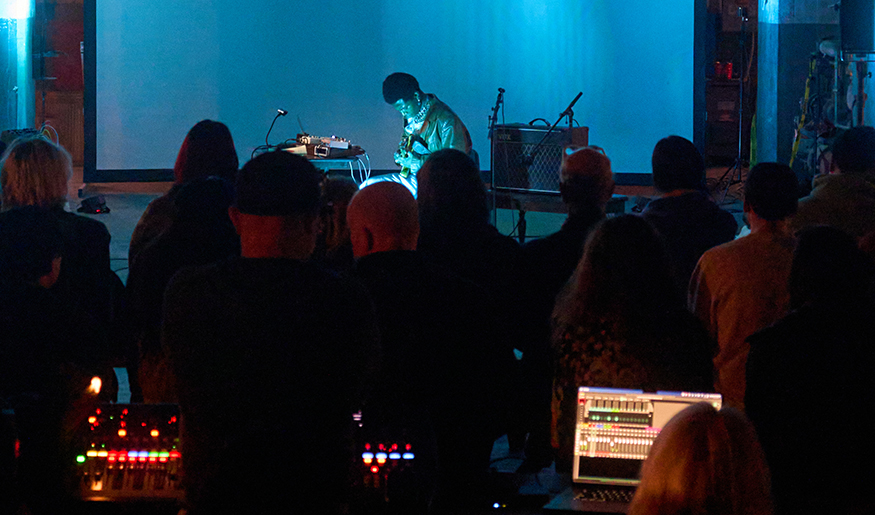
Support for the festival comes from a variety of sources. “From the institutional to the intimate, each contribution helped actualize our vision,” says Sadri. “SPAM is thankful to DXARTS, Src Material, Steam Plant, 4Culture, STF [UW Student Technology Fee], and Shunpike, our former fiscal sponsor, for standing behind it with generosity and care. There’s also the labor of many people — DXARTS faculty, organizers, curators, our jury and artists. Working together on this has been fun. Being around people who think like you and people who challenge you and push you forward is a joy.”
As this year’s SPAM New Media Festival is quickly approaching, Sadri and Skutley look forward to experiencing the event with the broader community. For those who are curious about new media but unsure what to expect, they suggest coming to the festival with an open mind.
“The ideas are innovative, and innovation often feels unfamiliar when it’s first introduced,” says Sadri. “But we got a great response last year. People really loved it.”
More Stories
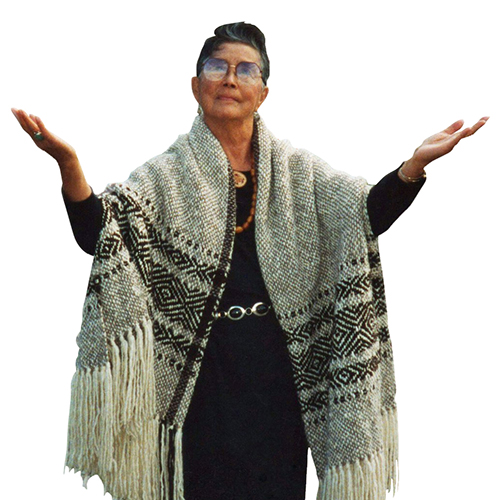
A Healing Heart Returns
In February, the UW Symphony will perform a symphony that Coast Salish elder Vi Hilbert commissioned years ago to heal the world after the heartbreak of 9/11. The symphony was first performed by the Seattle Symphony in 2006.

Need a break from holiday movies? Try these
For those wanting a break from holiday movies, Cinema & Media Studies faculty and grad students offer suggestions.

A "gesture" to jump-start careers
To prepare students for professional success, the UW College of Arts and Sciences offers “gesture,” a mock startup company where student interns gain skills that employers seek.
